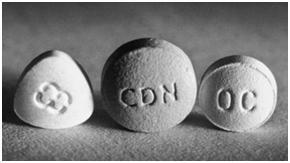Maine Voices: Setting arbitrary deadline would undermine treatment for addiction

Addiction Law, History and Public Policy Articles
Addiction Treatment Articles
Opioid Addiction Treatment
Suboxone Treatment
Overview
Originally Published: 12/18/2011
Post Date: 12/18/2011
by Roy Miller, M.D.
Attachment Files
PDF File | Maine Voices: Setting arbitrary deadline would undermine treatment for addiction
Summary/Abstract
Maine physician speaks out about impact of proposed MaineCare two year limit for Suboxone Treatment and why it won't work.
Content
Limiting MaineCare patients to two years of treatment with Suboxone could create further problems down the road. There is a proposal to limit MaineCare patients to two years' use of Suboxone, a drug that treats people addicted to narcotics. It may seem logical to think that drug addicts should be cured in two years, however, it is not that simple. Suboxone helps patients with few resources to kick addiction to painkillers such as Dilaudid, left, and OxyContin, center and right. I have been a family physician in a Maine rural health center for 31 years. About 20 years ago, we were encouraged to use narcotics for people with chronic pain, not just those with cancer. This helped many people but also created a problem of narcotics abuse. Also, we found that higher doses did not relieve pain better but did create new problems of addiction and hypersensitivity. As often happens in medicine, the pendulum swung too far from one extreme to another and is now settling back. I treat addicted patients with Suboxone because my patients have few resources to help them get off addictive drugs. There are treatment programs, but most are meant for detoxification and short-term help. There are methadone clinics, but they require daily visits to receive medication. This requires a long daily drive which makes it hard to keep a job. Training teaches doctors who prescribe Suboxone that addiction is a chronic disease, like diabetes. Patients need varying levels and lengths of treatment. Prescribing requires a special license and the government limits each doctor to 100 patients so that no one makes this a major part of their practice. How does it work? It attaches to the same brain receptors as morphine and satisfies them (thus ending craving) but gives no high. Suboxone is taken orally. Suboxone allows addicts to function normally, to stop spending their day trying to buy drugs on the street, and to start dealing with their addiction. Treating patients with Suboxone is a very satisfying part of my practice. Most patients are in their late 20s. Many patients are at risk of losing their children. Many have been jailed, usually for offenses related to obtaining money to buy drugs. Most come in because they realize that they need to change their lives if they are to have lives. They are seen frequently at first, have announced and unannounced urine drug tests and pill counts and are required to get counseling. Of the 61 patients I treat, 41 are employed, three are students, two are disabled and many of the rest are at-home parents. Six months into treatment I usually see real changes in these folks. They can sit without fidgeting. They can look me in the eye. They have often gotten a job, are starting to work out their legal issues and to deal with problems instead of using drugs every time something difficult comes along. So why isn't two years enough time to cure these folks? One reason is that these are not just uncaring people who turned to drugs rather than getting a job. A very high percentage were abused physically or sexually as children and turned to drugs to escape. Some of my patients began using drugs at age 10. They have used drugs to cover up issues over the years until they lost the ability (and self-confidence) to solve problems in their lives. Once on Suboxone and off narcotics they can begin learning how to deal with life's problems. Some progress smoothly, gaining from month to month, and are off Suboxone in a year or two. Many have a more up-and-down course with setbacks and mistakes that slow the process. Some become stable, work regularly and have no desire for narcotics, but cannot feel safe without a small dose of Suboxone. Others have problems that are not solved with two years of counseling. But most are out of legal trouble, no longer roaming the streets buying drugs or committing crimes, and have stabilized their living situation. Think about how difficult it is for people to quit smoking, and you can see why two years may not be long enough to treat for narcotics addiction. Cutting off their treatment with an arbitrary deadline is not a good plan. Private insurance companies do not limit patients to two years of treatment. Treating addicted patients appropriately is good for them and is good for Maine. Any MaineCare savings from not purchasing Suboxone will be offset by emergency room visits and hospital admissions for addicts who relapse and start using drugs again. Roy Miller, M.D., practices medicine at the Sheepscot Valley Health Center in Coopers Mills.





